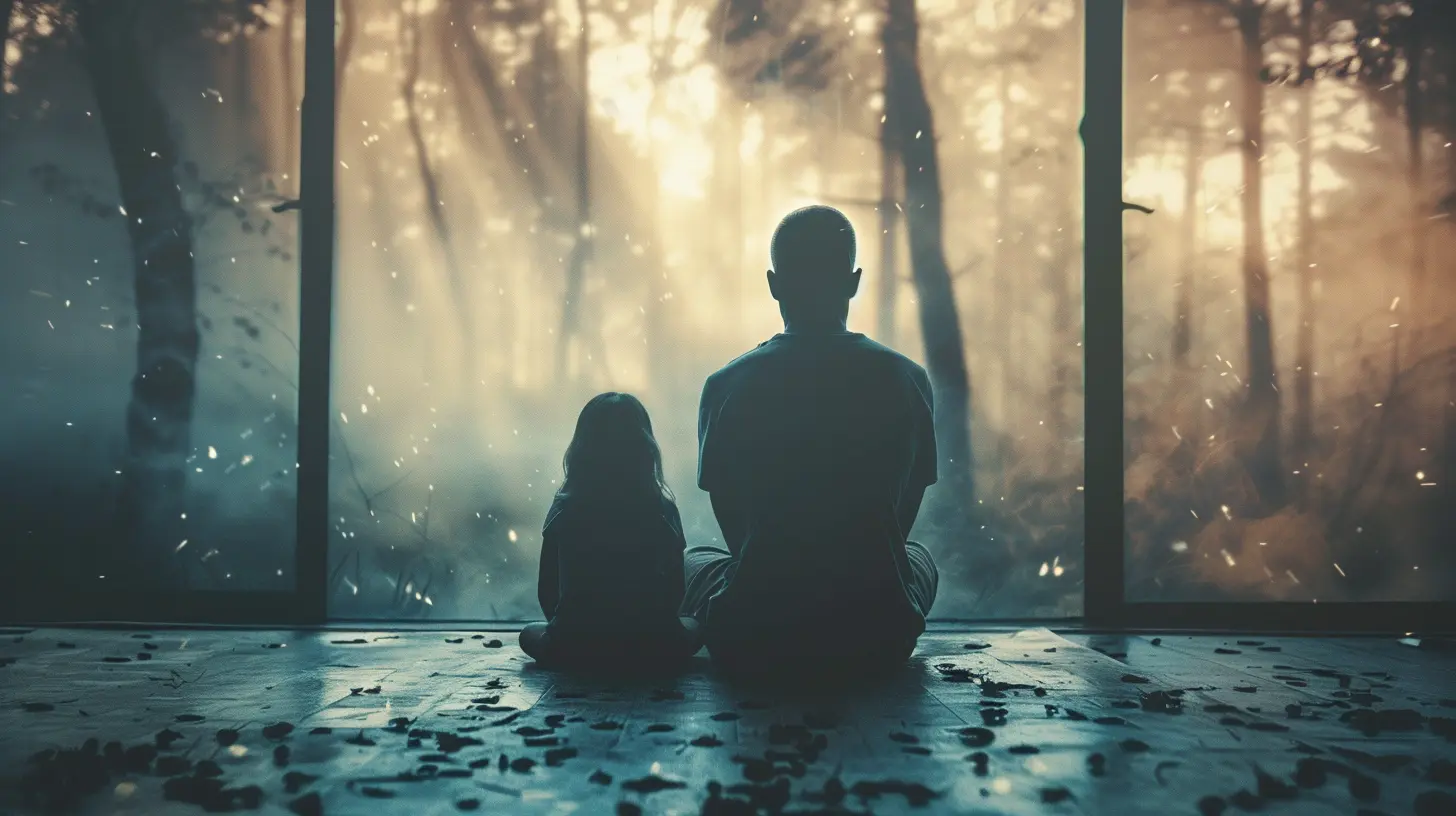How Family Dynamics Can Influence Addiction
28 May 2025
Addiction doesn't happen in a vacuum. It's not just about the substance or behavior—it's about the environment, the relationships, and the deep-rooted emotional patterns that shape a person's life. And guess what? Family plays a massive role in this.
The way families interact, communicate, and handle stress can either create a protective buffer against addiction or set the stage for it to develop. So, let's dive into how family dynamics can influence addiction and what that means for breaking the cycle.

The Role of Family in Shaping Behavior
Before we even get into addiction, let’s talk about how much families influence behavior in general. Think about it—our first lessons in life come from home. We learn how to communicate, cope with emotions, and deal with stress based on what we see around us.If a family provides a supportive, open, and emotionally healthy environment, this sets a strong foundation for resilience. On the other hand, if dysfunction, trauma, or neglect are present, individuals may seek escape through substances or addictive behaviors.
Addiction often isn't just about the "bad choices" people make—it's about the environment that shaped those choices.

How Family Dysfunction Contributes to Addiction
Family dysfunction takes many forms, and each can contribute to addiction in a unique way. Let’s break it down.1. Neglect and Emotional Unavailability
When emotional support is lacking, children may feel abandoned—even if their basic needs are met. Parents who are physically present but emotionally distant may leave their children searching for external comfort. This void can later manifest as substance abuse, gambling, or other addictions.It’s human nature to seek connection. If it's not found at home, people will look for it elsewhere, sometimes in destructive ways.
2. Trauma and Abuse
One of the strongest links between family dynamics and addiction is trauma. Physical, verbal, or sexual abuse within a family can lead to deep emotional wounds. Those wounds don’t simply vanish over time; they linger, fester, and often turn into maladaptive coping mechanisms like substance use.For people who have experienced trauma within their family, addiction can seem like the only way to numb the pain. It’s not about getting high—it’s about getting away.
3. Overprotective or Controlling Environments
On the flip side, some families are overbearing and controlling, leaving little room for personal growth. Children raised in highly restrictive households may struggle with self-expression and decision-making.Once they gain freedom—whether in college or adulthood—some swing to the opposite extreme, experimenting with substances or risky behaviors they were never allowed to explore. The rebellion against control can sometimes lead straight into addiction.
4. Substance Abuse in the Family
It’s no secret that addiction runs in families. If a child grows up in a home where drug or alcohol use is normalized, they’re more likely to develop the same patterns.It’s not just about genetics (although that plays a role). It’s also about learned behavior. When children see their parents using substances to cope with stress, they subconsciously adopt the same approach.
5. Codependency and Enabling
Some family members unknowingly contribute to addiction by enabling or becoming codependent.- Enabling: Making excuses, covering up for addictive behaviors, or dismissing the problem only helps it continue.
- Codependency: An unhealthy emotional reliance where one person’s behavior revolves around managing or protecting another’s addiction.
Both of these patterns reinforce the addiction cycle and make recovery much harder.

The Impact of Birth Order and Sibling Roles
Believe it or not, something as simple as birth order can shape a person's susceptibility to addiction.- The Oldest Child: Often takes on the role of the "responsible one" and may suppress their own struggles while trying to keep the family together. This bottled-up pressure can later explode through addictive behaviors.
- The Middle Child: Sometimes feels overlooked, leading them to seek attention in unhealthy ways, including substance use.
- The Youngest Child: May be more prone to risk-taking behavior, including experimenting with substances, due to fewer restrictions or increased leniency.
- The Only Child: Can experience intense pressure to succeed and may turn to substances as an escape from high expectations.
While these aren't hard-and-fast rules, birth order and sibling dynamics do play a role in shaping behaviors and coping mechanisms.

Breaking the Cycle: Can Families Help Prevent Addiction?
Absolutely. While family can be a source of dysfunction, they can also be the most powerful force in overcoming addiction. Here’s how families can help break the cycle:1. Encourage Open Communication
Hiding emotions and avoiding tough conversations only fuels addiction. Families that foster honest, judgment-free discussions create a space where struggles can be addressed before they spiral out of control.2. Set Healthy Boundaries
Boundaries are essential. They prevent enabling behavior and protect both the addicted person and their loved ones. Knowing when to say "no" and when to step in with support is a delicate balance, but it's crucial for recovery.3. Seek Professional Help Together
Addiction isn’t just an individual issue—it’s a family issue. Therapy and support groups for both the addicted person and their family members can help break dysfunctional patterns and promote healing.4. Promote Healthy Coping Mechanisms
Stress and hardship are inevitable, but families can teach better ways to handle them—like exercise, meditation, creative outlets, or simply talking things out instead of bottling them up.5. Lead by Example
Parents and older siblings play a major role in shaping behavior. Modeling healthy habits, emotional expression, and responsible substance use (or abstinence) can make a world of difference in preventing addiction.Final Thoughts
Family can be a source of trauma, enabling, and dysfunction—pushing some toward addiction. But family can also be a pillar of strength, support, and healing.The cycle of addiction doesn’t have to continue. With awareness, healthier communication, and genuine support, families can create an environment that breaks toxic patterns and fosters recovery.
Because at the end of the day, addiction is more than just the substance—it's about the connections, or lack thereof, that drive it. Families have the power to either fuel the fire of addiction or help extinguish it for good.
all images in this post were generated using AI tools
Category:
AddictionAuthor:

Jenna Richardson
Discussion
rate this article
3 comments
Xena O'Neal
Family dynamics: where love and chaos collide, sometimes leading to addictions. Let’s blame Aunt Karen’s fruitcake, shall we?
June 10, 2025 at 4:45 PM

Jenna Richardson
Indeed, family dynamics can significantly shape behavior and coping mechanisms, often leading to complex issues like addiction. Aunt Karen’s fruitcake is a humorous reminder of how even the smallest elements of family interactions can have unexpected impacts.
Aisha Elliott
Understanding family impacts healing and growth.
May 30, 2025 at 4:57 AM

Jenna Richardson
Absolutely! Family dynamics play a crucial role in shaping our perspectives and behaviors, significantly impacting the journey of healing and recovery from addiction.
Clara McCray
Family dynamics shape our emotional landscapes and coping mechanisms. Understanding these intricate patterns reveals how attachment styles and communication patterns can foster vulnerability to addiction, emphasizing the need for compassionate interventions that address the roots of behavioral struggles within familial contexts.
May 28, 2025 at 4:53 AM

Jenna Richardson
Thank you for your insightful comment! You're absolutely right—understanding family dynamics is crucial for addressing addiction and fostering compassionate interventions.



